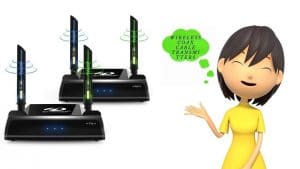As one of the most recognizable names in affordable fashion, Banana Republic has carved out a distinctive place in the retail landscape. But with stores closing left and right, is this mall brand still in business? Keep reading for the inside scoop on Banana Republic‘s evolution fromstartup to retail juggernaut.
Banana Republic’s Humble Safari Origins
Founders Mel and Patricia Ziegler started Banana Republic in 1978 as a safari-themed clothing company. Their small San Francisco store sold rugged khakis, vintage military surplus and exotic travel apparel evoking romantic far-off places.
As Mel Ziegler told The New York Times in 1988:
“We saw ourselves as very theatrical. We were selling romance and adventure. Banana Republic was like a stage set.”
This unique approach quickly attracted a loyal following among adventurous travelers and urban professionals. By 1983, Banana Republic had expanded to 13 stores and caught the attention of Gap Inc.
From Safari Outfitter to Mainstream Staple
When Gap Inc. acquired Banana Republic in 1983, it transformed the brand into a mainstream retail force. Gap gave BR access to its supply chain and manufacturing capabilities to produce higher volumes at lower prices.
The Zieglers disliked this shift from specialty to mass-market, and parted ways with the company in 1985. But Banana Republic was just getting started.
Throughout the 1980s and 90s, BR rode America’s mall boom to become a staple for casual workwear and city basics. By 1999, it reached 200 U.S. locations and $1 billion in annual sales.
Adapting for a New Century
Entering the 2000s, Banana Republic revamped itself to attract younger shoppers. Design director Mark Breitbard introduced trendier styling with metallic fabrics, military details, and updated silhouettes.
These efforts paid off with improved sales and profits. In 2010, Banana Republic expanded overseas with its first Chinese store. There are now over 1,000 BR locations globally.
Banana Republic adapted to reach new demographics. Image: Banana Republic store in Milan
Banana Republic also embraced technology to enhance customer experiences. In 2019, it launched Virtual Stylist and Style Programs to provide personalized recommendations. Contactless payment and curbside pickup make shopping seamless.
According to Banana Republic’s current President and CEO, Sandra Stangl:
“Our priority is engaging with our customers how and where they want to shop with us.”
What Banana Republic Offers Today
While adapting to the times, Banana Republic still delivers the polished staples it’s famous for—think button-downs, pencil skirts, trench coats and wrap dresses in sleek silhouettes. Natural fibers and luxe finishes ensure enduring quality.
Their collections offer casual chic for work, weekends and travel. Popular items include the iconic Sloan pant, floral sundresses, and Italian merino sweaters. BR also carries shoes, handbags, jewelry and accessories in classic and contemporary styles.
Prices sit at the higher end for mall brands, but frequent sales make the pieces an affordable luxury. Banana Republic offers extended sizing up to 4X for greater inclusivity.
Part of the Gap Family
As a Gap Inc. subsidiary, Banana Republic shares similarities with sister brands Gap and Old Navy, while occupying its own niche:
Gap: Basic denim, t-shirts, and sweaters for the whole family at low prices
Old Navy: Fun, trendy clothing and accessories for bargain hunters
Banana Republic: Sophisticated workwear and timeless basics at moderate price points
But each brand has a distinct perspective and shopping experience. Banana Republic targets professionals and modern minimalists seeking quality and style.
Behind the Iconic Name
Banana Republic’s uncommon name refers to the “banana republics” of Central America. In the late 1800s, these unstable countries relied heavily on banana exports and were exploited by foreign corporations like United Fruit Company. The term gained notoriety during the U.S. interventions of the early 1900s.
Gap Inc. saw “Banana Republic” as evocative of exotic adventure and far-flung travels in keeping with the brand’s early safari theme. Although Banana Republic no longer sells khaki shirts and cargo vests, the name is a symbol of its heritage.
Still Evolving After 40+ Years
So is Banana Republic still around? Absolutely. With over 628 North American locations and a thriving e-commerce business, BR is here to stay.
The brand has survived by constantly assessing consumer preferences and adjusting its strategy. While recessions, online shopping and fast fashion diluted its dominance, Banana Republic found renewed relevance through stylish collaborations with brands like Stranger Things, Lilly Pulitzer and Karla Gallardo.
Capitalizing on trends keeps Banana Republic fresh, like this Stranger Things collaboration.
Banana Republic also leads the industry in sustainable practices. Its eco-friendly BR Sustain line utilizes recycled and organic materials.
For over 40 years, Banana Republic has adapted to offer modern classics with sophisticated edge. By playing to its strengths as a purveyor of affordable luxury, BR is poised to dress discerning professionals for decades to come.










